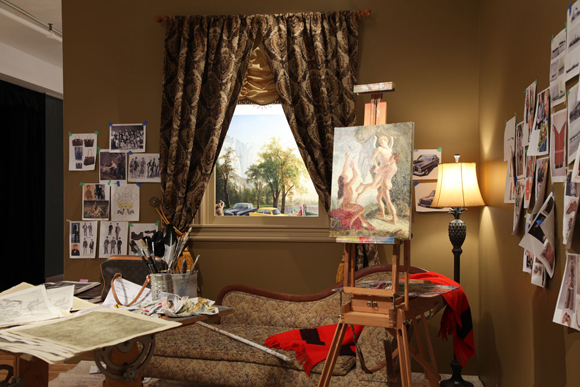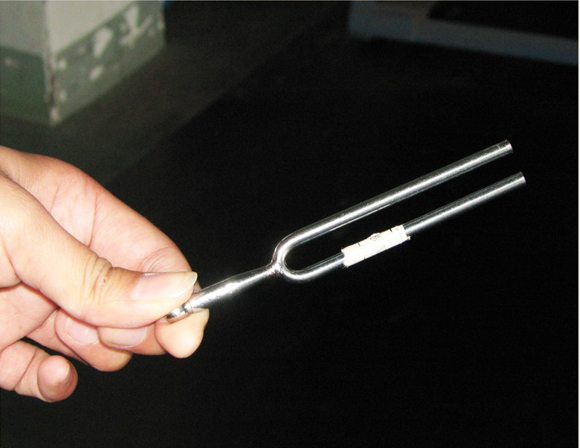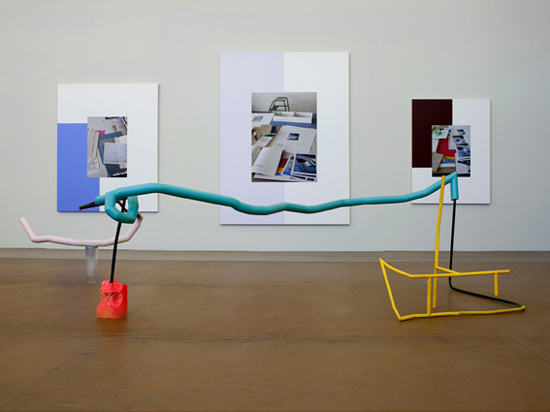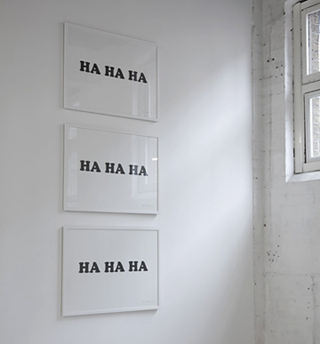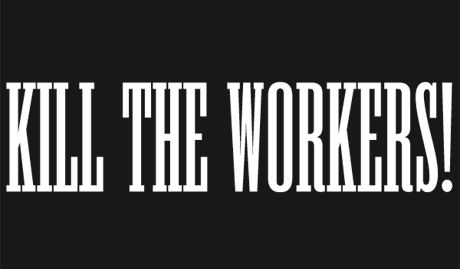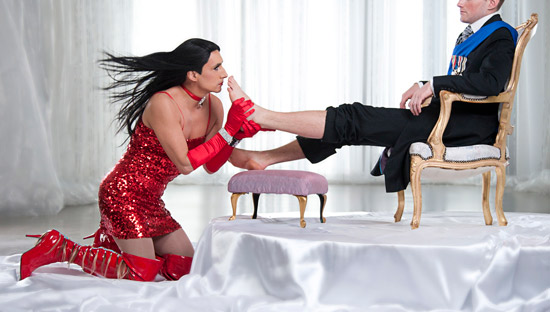Currently on view: Montréal
Pierrick Sorin: Une vie bien remplie
at Great Hall, Darling Foundry
16 June – 28 August 2011

Pierrick Sorin “C’est mignon tout ça†(1993) short film 4 mins. Courtesy of the artist and Darling Foundry
Une Vie Bien Remplie is a collection of works by French videographer Pierrick Sorin, currently at the Darling Foundry. The six pieces on show form a comprehensive twenty-year overview of the artist’s career, spanning most of his thematic realm. Sorin reaches high levels of self-contemplation with each of his films and videos in order to subvert his own artistic relevance and project the buoyancy of his humor, which fluctuates between subtlety and satire.
With “C’est mignon tout ça†(1993) for example, Sorin films himself on all fours in garter belt, high heels and stockings, fondling a monitor inches from his face which is broadcasting a live feed of his own behind. The mise en scène is overdubbed and inter-spliced with a closely-shot interview of our self-portraitist, confessing his difficulties at overcoming shyness and creating meaningful relationships with others. If nothing else, this first piece illustrates the extent to which Sorin uses the versatility of video to comment on this medium of tele-presence that separates as much as unites its protagonists with the rest of the world.
Continue reading “Review: Pierrick Sorin “Une vie bien remplie””




